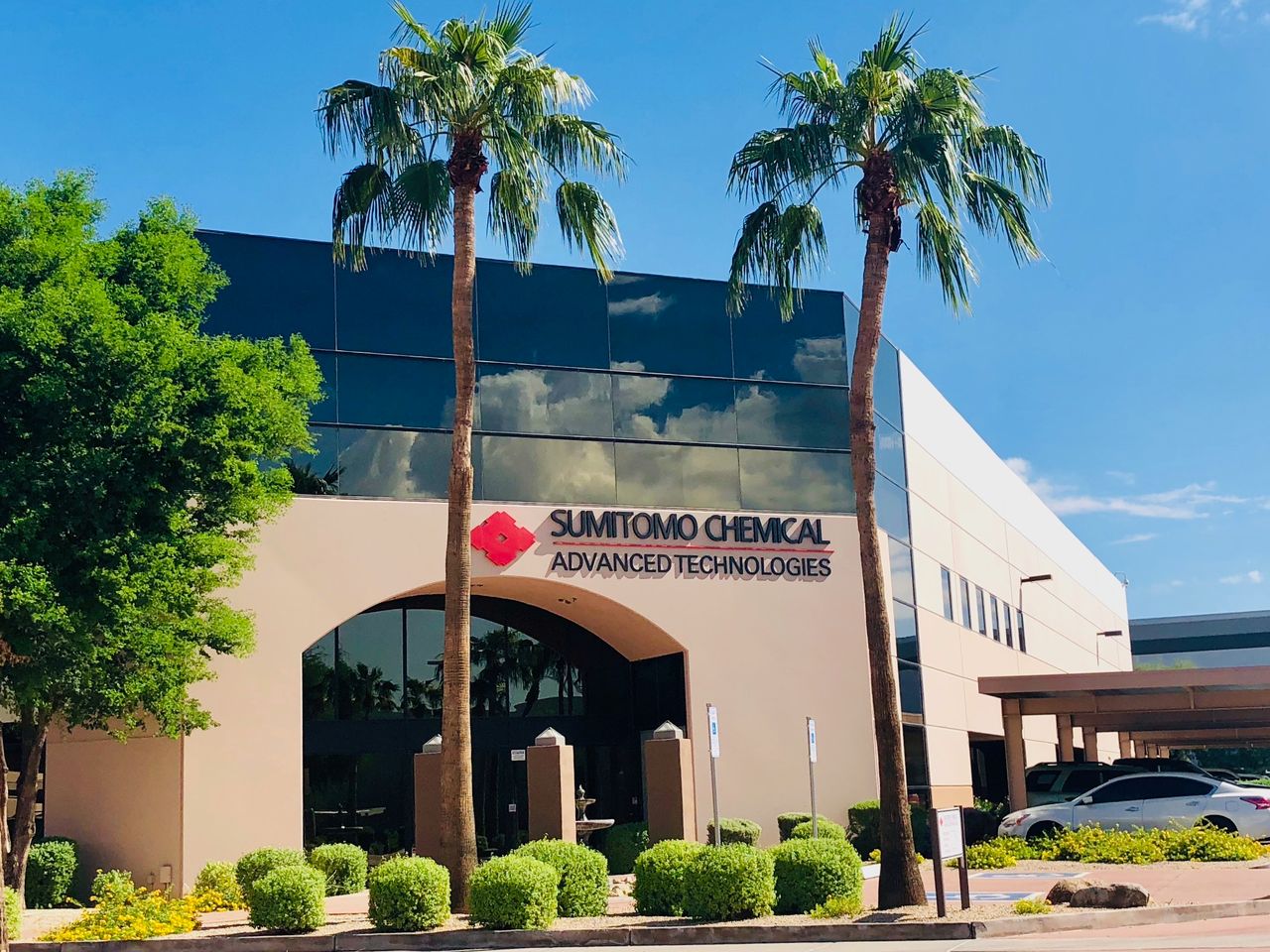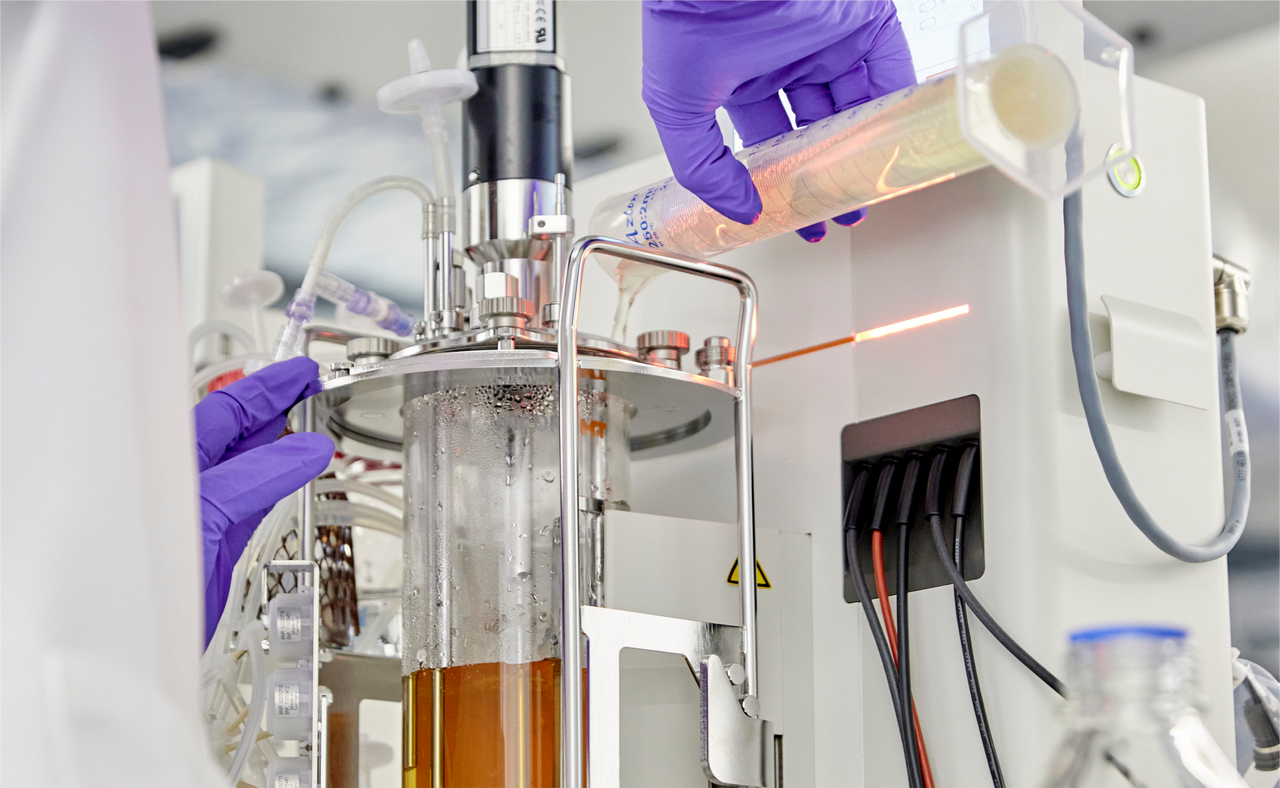In the pursuit to revolutionize Active Pharmaceutical Ingredient (API) production, FabricNano’s collaboration with Ginkgo Bioworks shines a spotlight on the necessity of incorporating enzyme immobilization in the earliest phases of biocatalysis research. By focusing on the early and systematic study of enzyme immobilization, FabricNano is paving the way for more cost-effective, environmentally friendly, and safer API synthesis.
API production with the Immobilization Engineering™ toolbox: A case study using Predictive Immobilization Plates (PIPs) for Baeyer–Villiger Monooxygenases (BVMO) enzymes
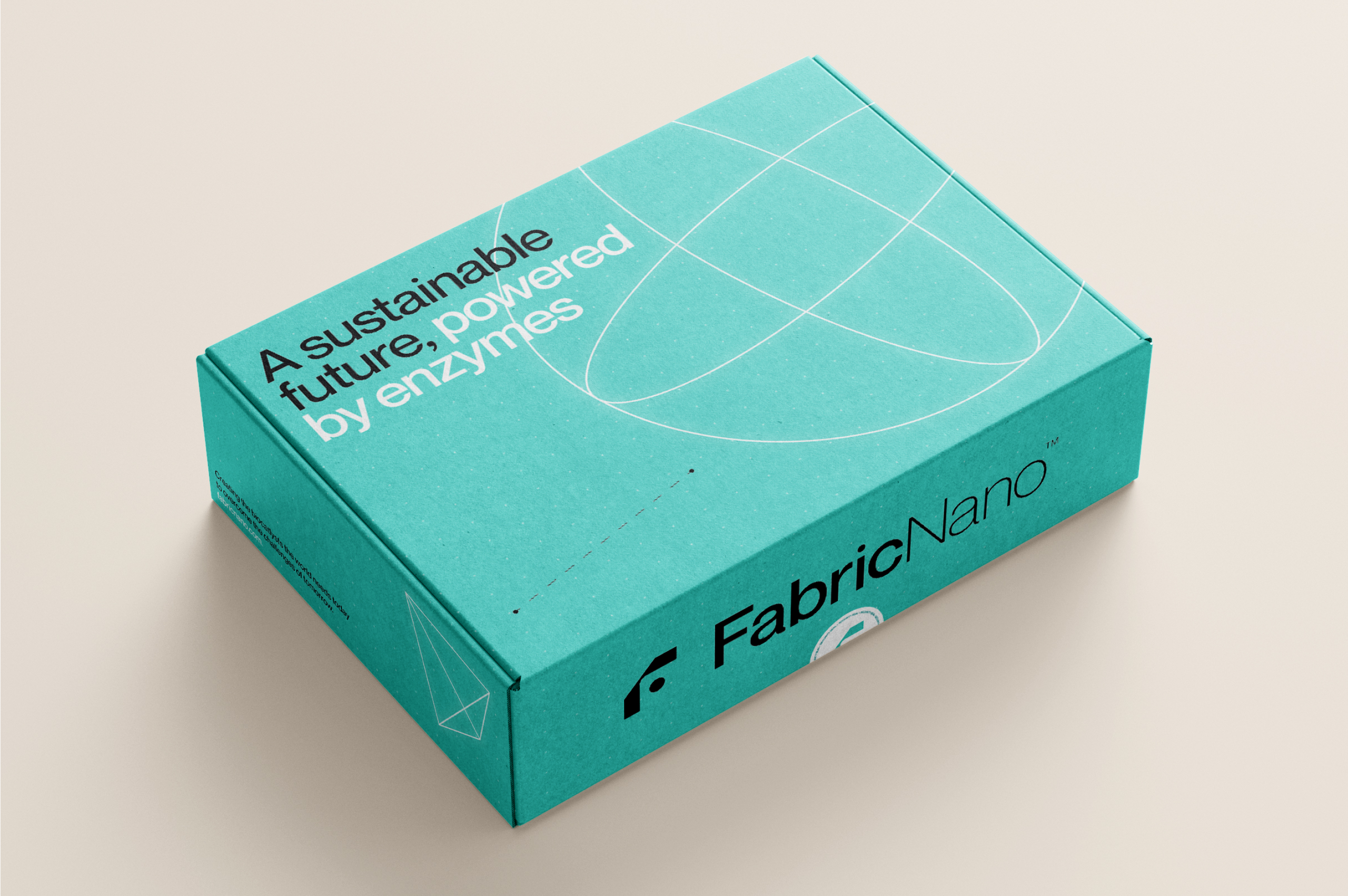
The Compelling Case for Enzymatic Synthesis
Enzymes are nature’s catalysts, capable of facilitating complex chemical reactions under mild and eco-friendly conditions. Despite their promise, the transient lifespan of enzymes in reaction settings has historically impeded their widespread adoption in industrial processes, particularly API production.
Breaking Barriers with Immobilization
FabricNano addresses this critical challenge head-on by harnessing the power of enzyme immobilization. By anchoring enzymes to a solid support, we significantly enhance their operational stability, transforming them into economically viable catalysts. However, this is no small feat – each enzyme’s unique 3D structure demands a tailor-made attempt at immobilization.
Taking the Statistical Approach to Immobilization
Our groundbreaking solution, the Predictive Immobilization Plates (PIP), epitomizes the blend of innovation and precision that defines FabricNano. These plates allow us to screen an array of immobilization conditions swiftly, identifying the optimal setup for any given enzyme with unprecedented speed and accuracy.
In a remarkable case study involving Baeyer–Villiger Monooxygenases (BVMO) enzymes, the PIPs demonstrated their worth:
Within a week of testing, we pinpointed a single condition that promised high retained activity and also remarkable stability, setting the stage for further enzyme active-site engineering and a robust intellectual property stance with respect to the immobilization-first finding.
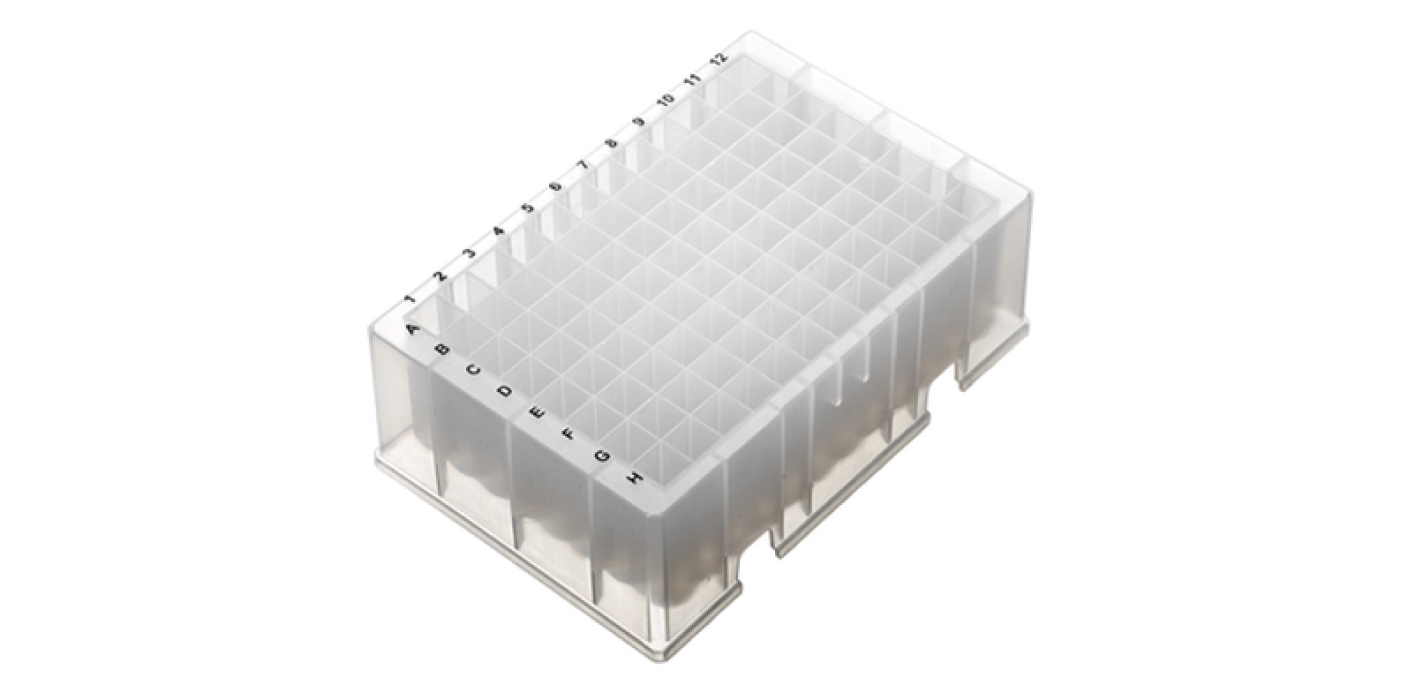
Preliminary Data in Only 1 week
With 4 Ionic carriers and 32 immobilization conditions tested, a single condition (A02) was identified as being highly active and highly stable, providing a clear signal that this particular BVMO homologue should progress to traditional enzyme active-site mutagenesis as well as surface residue mutagenesis (a more advanced FabricNano technology offering that we call Interaction Engineering™). In addition to the early clarity that this BVMO homologue can be successfully immobilized, we have also generated a strong intellectual property position with only 1 week of laboratory testing.
The Case Study
The discovery in well “A02” is particularly noteworthy, highlighting the inherent challenges in biocatalyst optimization. The simple act of screening with a FabricNano Ionic Predictive Immobilization Plate (Ionic-PIP) underscores the complexity of enzyme immobilization—a challenge that FabricNano embraces with cutting-edge technology and a data-driven approach. The Ionic-PIP is designed to explore the cross-section of immobilization parameters to maximize the likelihood that an out-of-sample enzyme finds near-optimal immobilization from the first screen. Using the data from this statistically constructed screen, FabricNano can then advise on further steps to improve performance and overall techno-economics using more advanced Immobilization Engineering tools, such as surface residue mutagenesis.
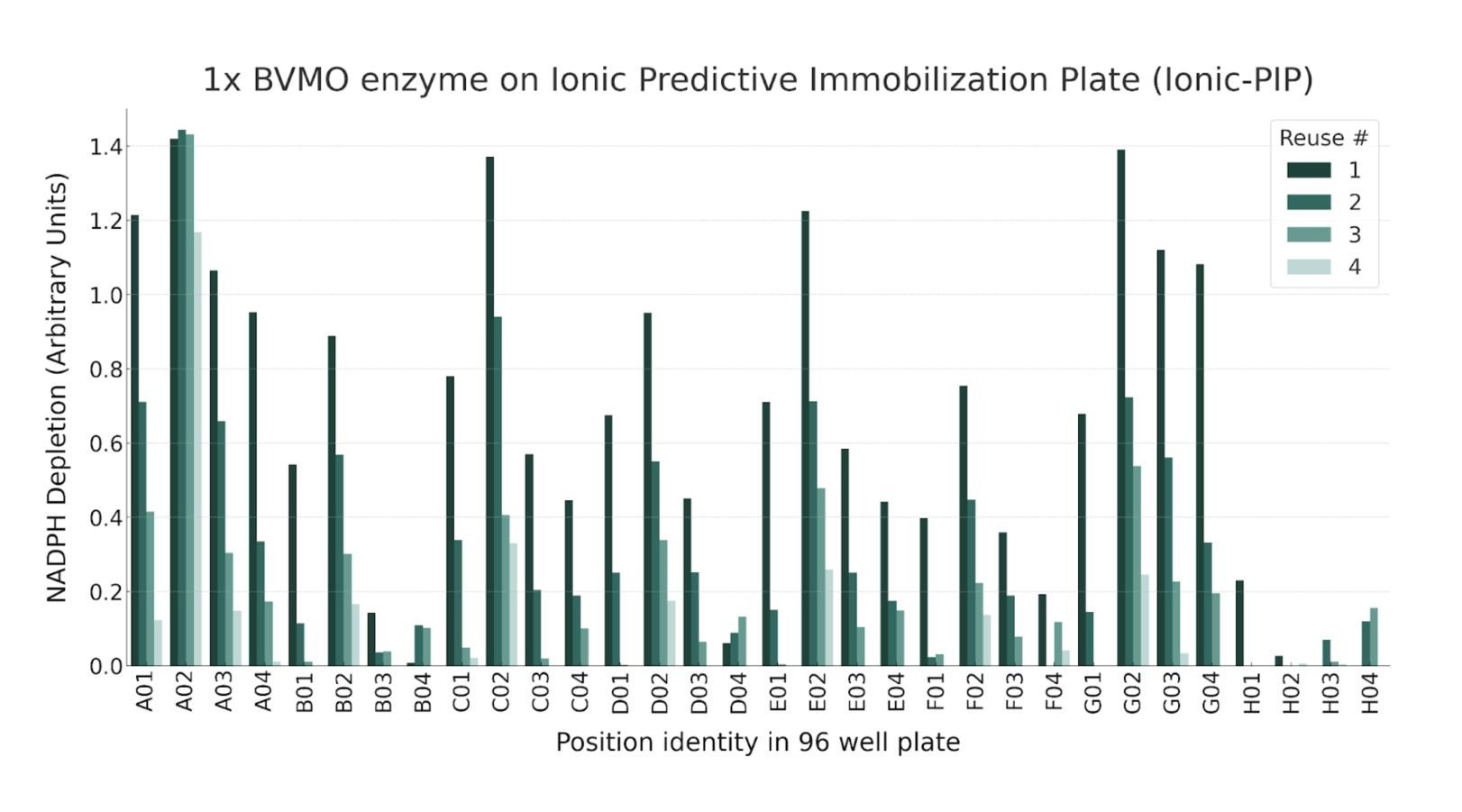
The table (below) represents a subset of simple variables that were manipulated in the quest for an active and stable biocatalyst. There are many more unlisted factors that define the immobilization mixture in each well.

It’s important to note that while the exact conditions in the statistically guided 96 well plate remain proprietary, FabricNano always provides the exact identity of the top hit in the plate free of charge.

Developing this simple consumable: The Ionic Predictive Immobilization Plate (Ionic-PIP)
Using PIPs at the earliest stages of your enzyme discovery project ensures that the enzyme retains the highest activity and stability, making the process more productive, efficient and cost-effective for any application.
To generate the current Ionic-PIP required the detailed study of millions of biocatalys combinations on our proprietary high-throughput automated workcell. FabricNano has done the heavy lifting, so that you don’t have to determine, define, or manually set up the appropriate immobilization mixtures with your valuable lab time.
FabricNano makes it easy by preparing the PIPs for you, and only including the pertinent variables that can be statistically linked to the activity and stability performance when conducting enzyme immobilization.
To give you a flavour for the immense design space, here are additional variables that might be critical to a new enzyme immobilization project:
- Incubation Time: The duration of exposure of the enzyme to the immobilization carrier can affect binding efficiency and activity retention.
- Incubation Temperature: Temperature can significantly influence enzyme binding, activity, and stability of the post-immobilized biocatalyst.
- Capping Agents (and Chosen Concentration): These are used to block reactive groups on the support material that are not occupied by the enzyme, which can help in reducing nonspecific binding and increase the stability of the immobilized enzyme.
- Buffer Type (and Chosen Concentration): The composition of the buffer can affect the enzyme’s tertiary structure and its interaction with the support material.
- Salt Type (and Chocen Concentration): Ions can influence the electrostatic interactions between the enzyme and the immobilization matrix.
- Enzyme-to-Support Ratio: The amount of enzyme relative to the support material can determine the density of active sites available to diffusing enzymes during the immobilization process and substrate accessibility post-immobilization.
- Support Material Porosity: The size and distribution of pores within the support material can influence enzyme loading and substrate accessibility post-immobilization.
- Cross-linking Agents (and Chosen Concentration): These agents can be used to further stabilize the enzyme on the support material or to cross-link enzymes together, affecting the enzyme’s local environment and activity.
- Surface Chemistry of Support: The functional groups on the surface of the support material can be modified to enhance enzyme attachment and orientation.
- Presence of Stabilizers or Additives: Small molecules or polymers can be added to the reaction mixture to enhance enzyme stability during and after immobilization.
At FabricNano, we provide you with a simple to use protocol so that you can study all the relevant parameters. We prepare the 96 well plates, so that you don’t have to. We minimize experimental error, because we have the expertise and automated workcell to handle solid and liquid dispensing.
Our vision: A sustainable future powered by enzymes
As we continue to sell these groundbreaking PIP products, we invite the academic community and the innovative biocatalysis industry to join us in our journey towards a more sustainable future powered by enzymes.

